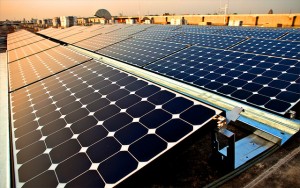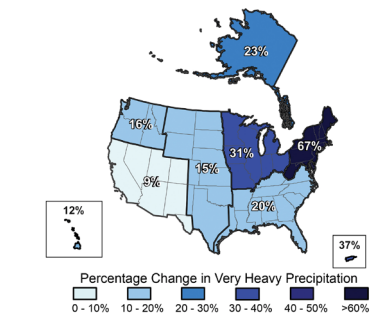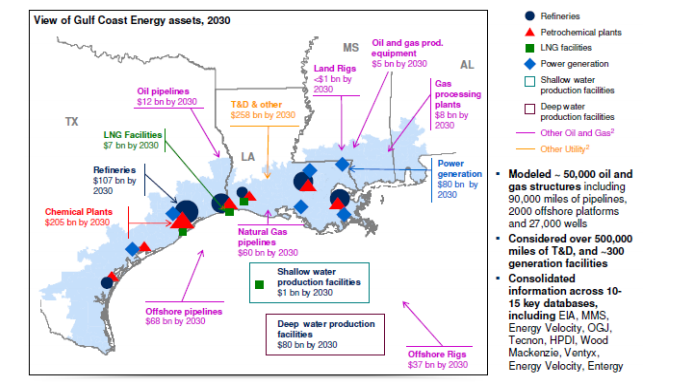Five Ways Climate Change Threatens Energy in Texas
The Department of Energy released a report recently looking at how climate change and extreme weather could make our power supplies more vulnerable. Given that it’s the nation’s leader in energy production, Texas was prominently featured.
The report looks at both current and future threats to the energy sector from climate change. There are three major trends, it says:
- Air and water temperatures are increasing
- Water availability is decreasing in certain regions
- Storms, instances of flooding, and sea levels are increasing in frequency and intensity
Though the report stressed how different regions of the country are connected by the energy sector, StateImpact Texas found five key takeaways that relate to Texas. Let’s take a look:
1. Power Lines Can’t Beat the Heat
It gets hot in Texas, but climate change will likely mean that it’s going to get even hotter. According to the report, that could be bad news for the state’s grid and its power consumers.
That’s because higher temperatures decrease the efficiency of electric transmission by reducing current carrying capacity. Translation: just like everything else, power lines have a hard time getting motivated in the summer heat.
As temperatures rise, power lines can sag. That means electrical currents have to work harder to move down them. This makes electricity more costly to transmit, and could even cause power failure by lines sparking against trees and other foreign objects.
2. After the Droughts Come the Floods
Texas’ persistent drought has seen the state experience much less rain. But when rain has fallen, it’s typically more intense than your average drizzle.
The report found that Texas experienced a 15% increase in the amount of “very heavy precipitation” it received between 1958 and 2007. This isn’t necessarily a good thing, since too much rain at once can damage crops and cause flash floods.
3. Cities Having to Choose Between Water and Fracking
It might seem unlikely that a city in Texas would lead the way in restricting the reach of hydraulic fracturing, or “fracking,” but that’s precisely what Grand Prairie did in 2011. In the midst of what was then the state’s worst drought in history, the Dallas-Fort Worth suburb decided to ban the sale of municipal water to companies that were fracking in the Barnett Shale. Although it was the first city in the United States to institute such a ban, other municipalities and water districts followed suit.
It should be noted that the ban didn’t halt fracking in Grand Prairie altogether. At least one drilling company simply pumped water from the neighboring city of Arlington, and trucked it back over to wells in Grand Prairie.
4. Goodbye to Galveston?
In 1969, Glen Campbell wrote the song “Galveston,” which trumpeted the Gulf Coast city as an idyllic seaside escape. While that may still be the case, one of the report’s projections says it may not be for long.
The report says that sea levels in Galveston could rise by as much as 3.5 feet by the end of the century. According to Climate Central, nearly 25% of Galveston’s population currently lives just four feet above sea level. Such a rise could also alter coastal ecosystems and damage infrastructure for energy and trade.
5. $1 Trillion Worth of Risk for Gulf Drillers
As climate change progresses, so too will the risk for oil and gas companies who drill in the Gulf. The report cites a study by Entergy Corporation and America’s Wetland Foundation that says that by 2030, over $1 trillion in energy assets in the Gulf of Mexico will be at risk from hurricanes and rising sea levels.
Oil platform damage from hurricanes like Ivan, Rita, and Katrina could become more common as the number and intensity of Gulf storms increases. The map below shows the distribution of Gulf energy assets that could exist by 2030, as well as where they would be located.


